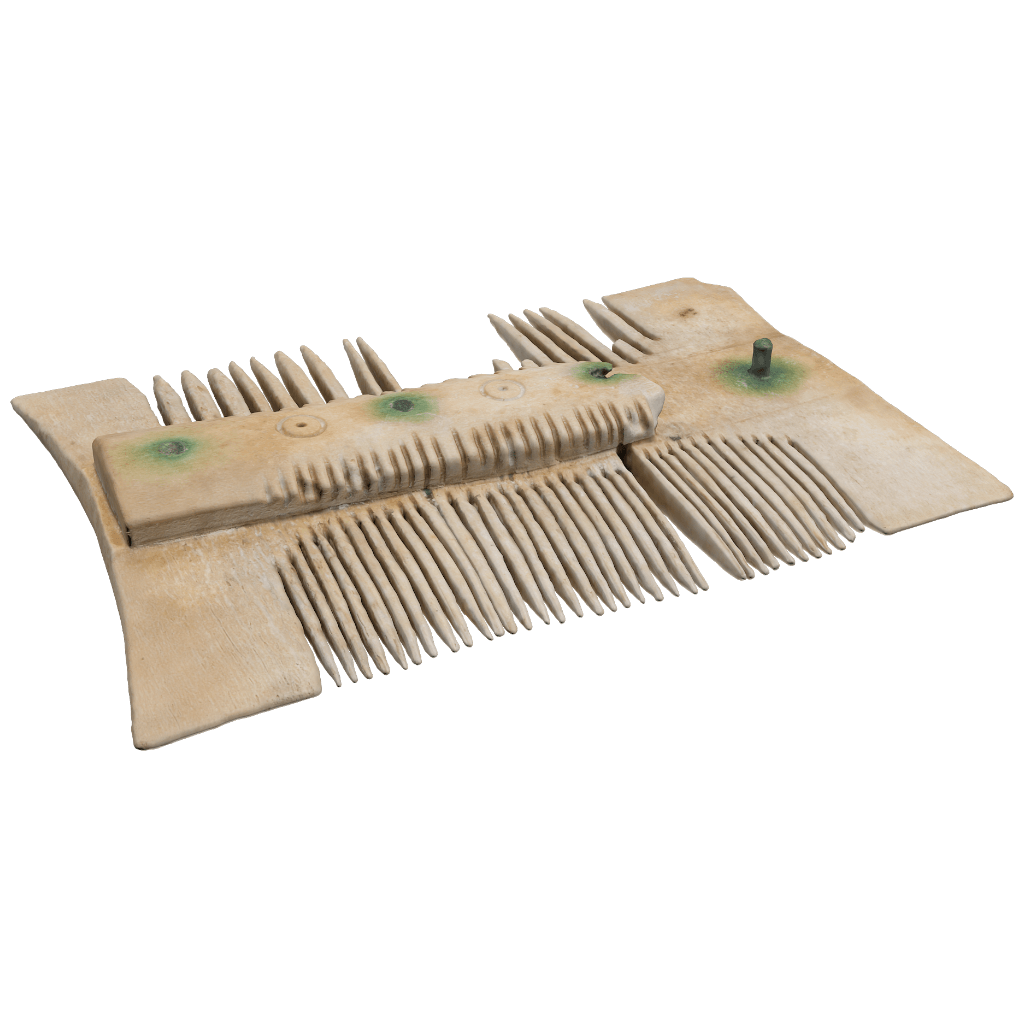
This double-sided comb was made of three layers of bone connected with bronze rivets. Two plates reinforce the structure of the item in its central part. They are decorated with a design in the form of circles bored between the rivets. The side edges of both plates feature regular grooves formed during the cutting out of the teeth. The item on display dates back to the Early Middle Ages. It was found in on the grounds of the Benedictine Abbey in Tyniec near Krakow.
In the Middle Ages combs were used not only by dwellers of cities, towns, and settlements located outside city walls, to look beautiful. Combs were also used by the clergy getting ready for the liturgy and to keep adequate cleanliness and hygiene, shaving their head clean was their only alternative.